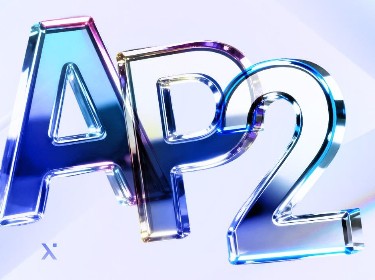Trends in the crypto space move at lightning speed. One moment it's ICOs, and then, before you could catch your breath, NFTs became the main event. When a DAT term arouses, a healthy dose of skepticism is natural. Is this something with staying power, or just another fleeting obsession?
Well, the numbers suggest this is a much bigger deal. Right now, corporate balance sheets hold a staggering $133.45 billion in crypto — and that’s not even counting the hundreds of billions sitting in ETFs. This shift goes far beyond crypto-focused startups. We are now seeing public companies and their financial departments treat digital assets as a serious part of their financial planning.
What’s driving this quiet adoption? For one, the search for better yields in a world of low interest rates — but it’s also about finding a genuine hedge against inflation and preparing for a more digitally focused economy. The movement is undeniable: crypto is making its way from the trading floor to the treasury, completely rethinking how companies manage their capital.
Here at PixelPlex, our whole job is to be immersed in these changes, so you don’t have to be. But launching a DAT involves far more than just acquiring some Bitcoin — it means addressing custody issues, security protocols, complex accounting, and regulatory hurdles. That is precisely why we put this analysis together.
We’re going to break down what DATs actually are, show you how they function in simple terms, and offer a completely honest look at both the promising opportunities and the hidden traps.
What is a Digital Asset Treasury?
Every company has a treasury — essentially its main piggy bank — traditionally filled with cash, bonds, and other predictable assets. A Digital Asset Treasury (DAT), however, is what you get when a company decides to allocate a significant portion of its savings into cryptocurrencies like Bitcoin (BTC) or Ethereum (ETH). This is more than a simple diversification play; it represents a complete reimagining of what a corporate asset can — and perhaps should — be in the 21st century.
You might be wondering why a CFO — usually the most risk-averse person in the building — would sign off on such a bold plan. The answer is simple: the economic rules have changed. For years, the combination of stubbornly low interest rates and creeping inflation has been turning corporate cash reserves into a slowly melting ice cube. Suddenly, holding millions in dollars wasn’t safe — it guaranteed a loss of purchasing power over time. A DAT, therefore, represents a strategic shift from passively preserving wealth to actively growing it — using the unique mechanics of the digital economy to counter the erosion of traditional money.
![]()
Companies with a DAT don’t just let their holdings sit idle. They actively manage their crypto to generate extra returns — often called yield — through financial mechanisms that originated within the crypto ecosystem itself:
- Staking: The crypto world’s version of earning interest. By locking up crypto assets, companies help secure Proof-of-Stake (PoS) networks like Ethereum and earn new tokens in return.
- Lending: Firms can act as lenders through DeFi platforms, earning interest from borrowers. These loans are typically overcollateralized, meaning borrowers must pledge more value in collateral than the amount borrowed.
- Liquidity provision: Companies can contribute assets to decentralized exchange pools, earning a share of transaction fees. However, this comes with specific risks, such as impermanent loss when token prices fluctuate.
You can almost pinpoint the exact moment the DAT movement gained traction. On August 11, 2020, Michael Saylor, the CEO of a software company called MicroStrategy, dropped a bombshell announcement. He was converting his company’s cash reserves into Bitcoin, a lot of it. He saw the US dollar’s value eroding and believed Bitcoin was a far better long-term store of value, a kind of “digital gold.” That time it was an audacious, almost absurd decision that truly opened the floodgates. Not long after, other major companies like Block (which used to be Square) made similar moves, confirming that Saylor’s big bet wasn’t just a stunt but the start of a real shift in corporate finance.
Blockchain for Business: Beyond Cryptocurrency to Real-World Value
Blockchain in Payment Services: Trends, Technologies, and Development Best Practices
Types of DATs
To make sense of all types, there’s a framework called the Crypto Treasury Classification Matrix (CTCM), and it boils everything down to two simple questions:
- How much of their treasure chest is actually filled with crypto? (This is their Reserve Intensity.)
- Is crypto their main asset, or just a side hustle? (This is their Operational Integration.)
For anyone investing in or dealing with these firms, this matrix is indispensable. It clearly separates a company just dipping its toes in for a speculative thrill from one whose blockchain game is serious. Figuring out where a company lands gives you a much sharper view of its potential rewards and, just as importantly, how vulnerable it is to the wild swings of the digital asset world.
| CTCM classification | DAT’s primary goal | Treasury function |
| Payment tokens (e.g., Bitcoin) | Core reserve asset: Store of value; long-term appreciation; hedge against fiat devaluation. | HODL & accumulation: Focus on secure cold storage/self-custody and leveraging capital to acquire more. |
| E-money tokens (EMTs) (e.g., fiat stablecoins) | Operational liquidity: Short-term reserves for payments, payroll, or immediate operational needs. | Cash management: Stored in secure hot/warm wallets for quick access and minimal transaction fees. |
| Asset-referenced tokens (ARTs) (e.g., tokenized treasuries) | Yield generation: Deploying idle reserves into low-risk, interest-bearing sovereign debt or money market funds. | Yield optimization: Utilizing DeFi/RWA Protocols for returns while maintaining high-grade collateral. |
| Utility/ecosystem tokens | Strategic exposure: Supporting core business partners; access to platform services; potential governance rights. | Venture/strategic allocation: Held in smaller, specialized wallets with a focus on governance voting and ecosystem participation. |
The answers to these questions give us four distinct kinds of DATs:
![]()
Digital Asset Reserve Diversifiers
These are classic, non-crypto businesses that decide to add a little crypto to their portfolio. Maybe it’s a hedge against inflation; perhaps it’s a calculated wager on the future. Whatever the reason, the crypto itself isn’t fundamental to their operations. For them, holding a digital asset treasury is a novel way to manage a tiny piece of their balance sheet while their core business carries on, completely unchanged.
Example 1: Look no further than Tesla. The world certainly sat up and paid attention when it announced a $1.5 billion Bitcoin purchase back in early 2021. The move felt less strategic and more like a powerful signal of innovation, coupled with a desire to shield some cash from inflation.
Example 2: Another great example is Block (formerly Square), which put about 5% of its cash into Bitcoin, calling it a move toward “economic empowerment.” For giants like these, it was an experiment.
Digital Asset Treasury Wrappers
With this group, crypto isn’t just part of the business – it *is* the business. Their entire purpose is to tap public markets for capital, then use that money to acquire and hold digital assets. What they offer investors is clever: a publicly traded stock that acts as a proxy for direct crypto ownership. In essence, the company becomes a vehicle for investing in a specific digital asset.
Example: By late 2025, Strategy Inc. (formerly MicroStrategy) had amassed over 200,000 BTC — a stash worth tens of billions of dollars. How? Strategy Inc. continuously issues new stock and takes on debt with one goal: to buy more Bitcoin. Their original software business has become a mere footnote. The entire company now functions as a massive bet on Bitcoin’s future, making its stock behave almost like a leveraged Bitcoin ETF.
Crypto Operators
We’re talking about exchanges, custodians, and payment processors. Their revenue comes from fees, commissions, and providing the core infrastructure that others rely on. While they hold a lot of crypto, it’s typically not for their own investment strategy — it’s working capital or funds held for customers. Their fortunes rise and fall with the health of the broader ecosystem.
Example: Coinbase is the perfect example. The exchange holds billions in digital assets, but that represents only a fraction of its total market value. The real engine is the constant flow of transactions it processes — trading fees are its lifeblood. To stay competitive, Coinbase keeps innovating, rolling out products like staking services and institutional-grade custody. Expanding into new on-chain tools depends heavily on secure smart contract development to safeguard user assets and ensure flawless execution.
Centralized Сrypto Exchange Development Explained: From Architecture to Launch
Smart Contract Development Cost Demystified: What Every Business Should Know
Crypto Conglomerates
This is where the lines really start to blur. These companies are not only deeply enmeshed in crypto operations but also strategically hold enormous crypto reserves on their balance sheets. The result is a double-edged sword of exposure — they’re betting on both the price of the asset itself and the overall growth of the industry.
Example: Take Marathon Digital Holdings (MARA). As one of the planet’s biggest Bitcoin miners, its entire business revolves around minting new Bitcoin. You can measure their success by their hashrate, which often tops a staggering 25 exahashes per second (EH/s)*. But here’s the twist: instead of immediately selling all the coins they mine to pay for their massive electricity and hardware bills, they make a conscious choice to hold on to a huge chunk of it — over 15,000 BTC.
This synergy means their stock is incredibly sensitive to Bitcoin’s price movements. Juggling the security of both their physical mining farms and a multi-billion-dollar digital treasury is an immensely complex task, which underscores just how vital a relentless process of security audits and risk management is to fend off threats from every angle.
For proof-of-work blockchains like Bitcoin, this number represents the sheer volume of guesses that all the mining machines on the network are making every single second. Their collective goal is to be the first one to find a valid block hash. You can tell a lot about a network’s health just by looking at its hashrate.
A high hashrate is a fantastic sign for both network security and decentralization. Because all that computing power is spread out, it becomes incredibly difficult for any single person or group to gain over 51% of the control and compromise the entire system.
How do DATs work?
So, where do DATs, especially the conglomerate types, get the money for their massive crypto capital? They certainly don’t just use leftover pocket change. Instead, they cleverly plug into the machinery of traditional financial markets, using a few specific tools to turn market optimism into cold, hard digital assets.
The basic model looks simple enough: raise money, buy crypto, and manage it. The real financial management, however, happens in the “raise money” part. ![]()
Equity issuance: selling stock at a premium
Quite often, the market values a DAT company for more than the raw value of the crypto it actually holds. This gap is known as trading at a premium to Net Asset Value (NAV).
Imagine a DAT holds $1 billion in crypto, but its total stock market value is $1.5 billion. That’s a 50% premium. What can the company do? It can run a “secondary offering” by creating and selling new shares at that higher market price. They then take that fresh cash, buy even more crypto, and instantly increase their total NAV. The result? An immediate value boost for every existing shareholder, which creates a powerful, self-reinforcing growth engine — at least as long as the market stays bullish.
Essentially, this strategy turns the company into a publicly traded stand-in for crypto, which is perfect for investors who want exposure without the headache of buying and storing crypto themselves.
A dip in market sentiment could cause it to shrink or vanish completely, slamming the door on this vital funding channel. Keeping track of these financial moving parts is a big task, which is why firms rely on powerful analytical tools to monitor NAV, mNAV*, market premiums, and investor mood in real time.
![]()
Market participants also keep a close watch on the mNAV (multiple of net asset value). This metric quickly shows if the DAT is trading at a premium or a discount compared to the actual worth of its assets.
Let’s say a DAT holds $100M worth of crypto. If its market cap climbs to $150M, it’s trading at a 50% premium to its NAV, which translates to an mNAV of 1.5x.
Convertible bonds: debt with a high-tech twist
Here’s a more intricate method: raising cash with convertible bonds. A DAT borrows money by issuing these bonds, but they come with a game-changing clause. Instead of just paying back the loan with interest, the bondholder gets the option to convert the debt into the company’s stock at a set price down the road.
From the company’s perspective, the move is brilliant. It lets them raise funds at a much lower interest rate than they would with a normal loan. Why? Because investors aren’t just lending money – they’re also buying what amounts to a cheap bet on the company’s future stock growth. If the stock price takes off, bondholders will almost certainly convert their debt into equity, and the company never has to pay back the principal in cash. It’s an incredible deal for a company that expects its stock to rise, as it’s a cheaper way to borrow while watering down existing shares as little as possible.
Preferred equity: attracting a different kind of investor
A final tool is preferred equity – part stock, part bond. These special shares usually pay a fixed dividend, giving investors a predictable income stream.
More importantly, preferred shareholders have a stronger claim on the company’s assets than common stockholders do. Put simply, if the company goes under, they get their money back before common stockholders see a cent. A DAT might use this strategy to bring in more conservative institutional investors who are curious about crypto but shy away from the wild price swings of common stock. By offering a product with a more stable, bond-like return, the company can widen its investor base and still raise the capital it needs to keep growing its digital asset portfolio.
| Mechanism | Goal for DAT | Investor benefit | Risk exposure |
| Equity issuance (stock sale) | Leverage NAV premium to buy more crypto at a discount | Amplified crypto price exposure via public stock | High stock price risk; funding halts if premium vanishes |
| Convertible bonds | Raise cheap, temporary debt that converts to equity later | Debt safety (interest/principal) with equity upside option | Risk of large debt obligation if stock fails to convert |
| Preferred equity | Attract conservative institutional capital with seniority | Fixed income (dividend) and priority in liquidation | Limited capital gains compared to common stock |
Cryptocurrency Exchange Development Cost: Key Factors & Estimates
Canton.Network Explained: How It Solves DeFi's Biggest Risks
DATs vs. ETFs
“Hang on,” you might be thinking, “this whole thing just sounds like a Bitcoin ETF.” It’s a reasonable thought, but they are two completely different beasts, built for investors with fundamentally different goals.
![]()
The quest for returns
A spot crypto ETF has one job: to mirror the price of an asset like Bitcoin. When Bitcoin’s price goes up, the ETF goes up. When Bitcoin falls, the ETF follows. That’s the whole story.
A DAT, however, is a full-fledged operating company playing an entirely different game. By putting its assets to work through staking, lending, and other DeFi strategies, a DAT aims for returns that could potentially dwarf what you’d get from simply holding the coin. To chase down this profit, DAT managers lean on powerful business intelligence solutions that analyze everything from on-chain transaction volumes and wallet activities to social media sentiment, seeking the best yield opportunities across protocols.
The risk equation
With an ETF, the primary danger is market risk – the simple fact that the price of the crypto could fall. The fund itself is tightly regulated, and the managers have a straightforward, passive role.
With DATs, a single bad investment, a poorly conceived DeFi strategy, or a security failure could gut the company’s value, even if Bitcoin’s price hasn’t moved. Industry reports tallied over $2.2 billion lost to DeFi hacks and exploits in 2024 alone. That underscores why a comprehensive smart contract audit service is critical to find vulnerabilities before they’re exploited.
Liquidity
ETFs are designed for easy access to funds. Market makers continuously create and redeem shares to ensure the ETF price tracks its underlying asset closely.
DATs lack this mechanism. Their share prices can trade at large premiums or discounts to NAV. For example, the Grayscale Bitcoin Trust often sold at a 20–30% discount before converting into an ETF. Premium/discount volatility is a fundamental DAT trait.
Regulations
ETFs operate within well-defined, decades-old frameworks.
DATs are new players, often straddling regulatory gray zones covering securities, commodities, and banking law. Advanced DATs create robust internal control systems, sometimes leveraging private blockchain development to maintain auditable, immutable records of internal transactions, helping satisfy regulators in an uncertain environment.
| Feature | DAT | ETF |
| Investment goal | Active returns: aims to outperform the asset by generating yield (staking, lending, DeFi). | Passive returns: mirrors the price performance of the underlying asset (e.g., Bitcoin). |
| Primary risk | Operational/security risk: smart contract failure, manager error, DeFi hacks. | Market risk: price volatility of underlying crypto asset. |
| Valuation/liquidity | NAV volatility: share price often trades at a premium or discount; lacks arbitrage mechanism. | High liquidity: share price closely tracks NAV through market makers. |
| Regulatory status | New/complex: operates in gray zones; requires extensive compliance and auditing. | Established/simple: fits into well-defined securities and fund regulations. |
The pitfalls you can’t afford to ignore
Behind the potential rewards lie serious risks that must be respected.
![]()
Market volatility
Crypto is highly volatile. A sudden 50% drop in Bitcoin can instantly erase a DAT’s gains and threaten financial stability. NAV premiums evaporate, limiting access to fresh capital. Debt obligations can force forced crypto sales, further depressing prices and compounding losses.
Debt risks and reflective downturns
Leverage amplifies gains on the way up, but magnifies losses on the way down. Many DATs issue convertible debt; if stock prices collapse, refinancing becomes impossible, making bankruptcy likely.
Regulation uncertainty
In the US, DATs without a substantial operating business risk being reclassified as an “Investment Company,” which could remove them from major stock indexes like the S&P 500, cutting off passive investment flows.
| Factor | US (SEC/CFTC) | European Union (MiCA) | Implications for DATs |
| Framework status | Fragmented: Split between SEC, CFTC, FinCEN; ongoing clarity efforts. | Comprehensive: Unified framework since 2024; clear licensing. | Jurisdictional risk and complexity for cross-border operations. |
| Financial reporting | Must file 10-Q/8-K reports (SEC-registered entities). | Governed by MiCA standards, emphasizing transparency and consumer protection. | Mandatory transparency builds investor trust. |
| Accounting rules | 2023 FASB rules allow marking crypto at fair value (market price). | Varies; focus on reflecting market value vs. cost basis. | High earnings volatility from crypto price swings reported quarterly. |
| Index inclusion risk | Risk of exclusion from S&P/Russell 2000 if classified under Investment Company Act. | Less explicit; focus on CASP licensing and operational rules. | Maintain operating business to ensure passive investment flows. |
| Advanced activities | Additional scrutiny if engaging in staking, yield farming, or leverage. | MiCA regulates stablecoins and service providers. | Staking and other DeFi activities require additional compliance (tax, securities). |
Operational risks
High-yield DeFi strategies expose DATs to technical dangers: smart contract bugs, sophisticated hacks, and protocol exploits. A single flaw can result in instantaneous, irreversible losses of hundreds of millions.
Enterprise Blockchain: Prom Promise to Profit
A Deep Dive into Post-Quantum Cryptography: The Next Security Frontier
To wrap it up
So, what’s the final word on DATs? It’s tempting to ask whether they’re a permanent fixture or just a passing crypto trend, but the reality is far more nuanced.
After all, the DAT model has already demonstrated its value, creating a solid conduit for traditional capital to flow into the digital asset space. This isn’t just speculation. However, the wild, unregulated gold rush we’re seeing now simply can’t last. A change is coming.
![]()
We believe the future of this sector is heading toward a clear separation. The market is going to cleave into two distinct camps.
On one side will be the companies built to last – the ones defined by solid management, genuine transparency, and sharp strategic thinking. Rather than merely holding assets, they’ll be building sustainable businesses, perhaps by offering tokenization services or constructing their own real world asset tokenization platforms. These are the businesses that will generate real revenue. That’s how they’ll weather the inevitable crypto winters.
And on the other side you’ll find the copycats and the reckless gamblers, who are destined to be swept away when the next major market correction arrives.
Making your way through this environment isn’t easy. It’s a genuine crossroads of technology, finance, and law. We put this guide together because we are genuinely invested in helping businesses grasp the potential here. So, whether you are outlining a new DAT strategy, building a secure white label crypto exchange development platform, or simply need a reliable technical partner for your next venture, our blockchain development services team has the expertise to help you build what’s next – and build it correctly.
FAQ
A DAT is a company that holds a large amount of crypto on its balance sheet and actively manages it to generate extra returns. You can invest in the company’s strategy by simply buying its publicly-traded stock.
It lets you gain crypto exposure through a familiar investment vehicle (a stock), avoiding the technical setup of wallets and keys. You are also backing a professional team whose job is to manage those assets for growth.
Not at all! An ETF is a passive fund designed to mirror a crypto’s price. A DAT is an active company making strategic business decisions, which creates potential for higher returns but also adds more company-specific risk.
It’s arguably the “death spiral.” This is a nasty feedback loop where a falling crypto price kills a DAT’s stock premium, making it unable to raise money and potentially forcing it to sell its assets into a bad market.
A DAT manages crypto for its own strategic benefit and balance sheet health. An exchange is a marketplace built so that other people can trade, which requires completely different technology and business models, starting with cryptocurrency exchange development.
For now, they mostly stick to major cryptos, but the technology allows for so much more. The growth of tokenization services means a future DAT could hold digital versions of anything from real estate to private company equity.




